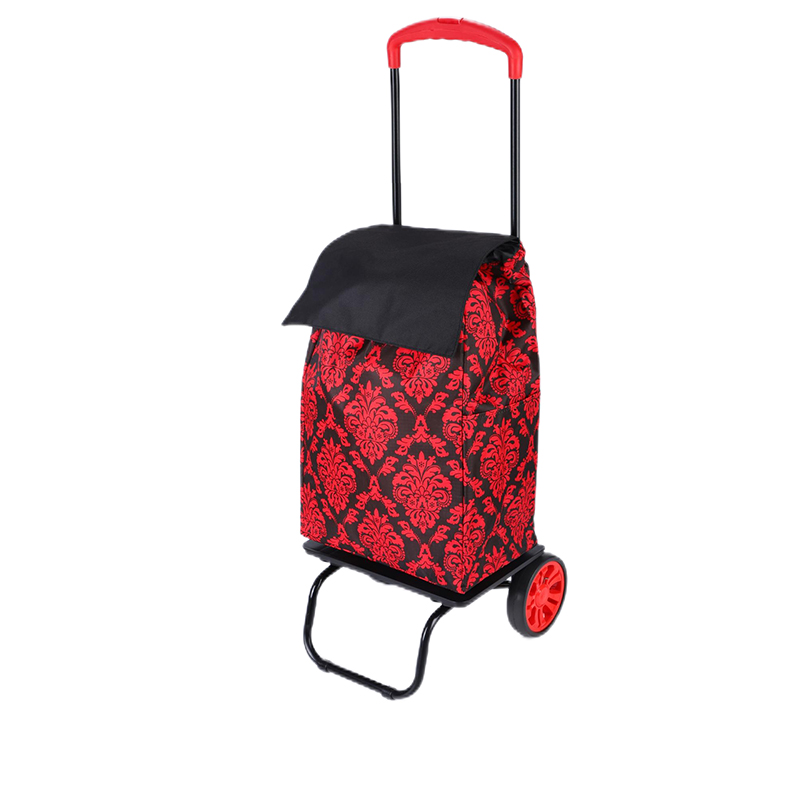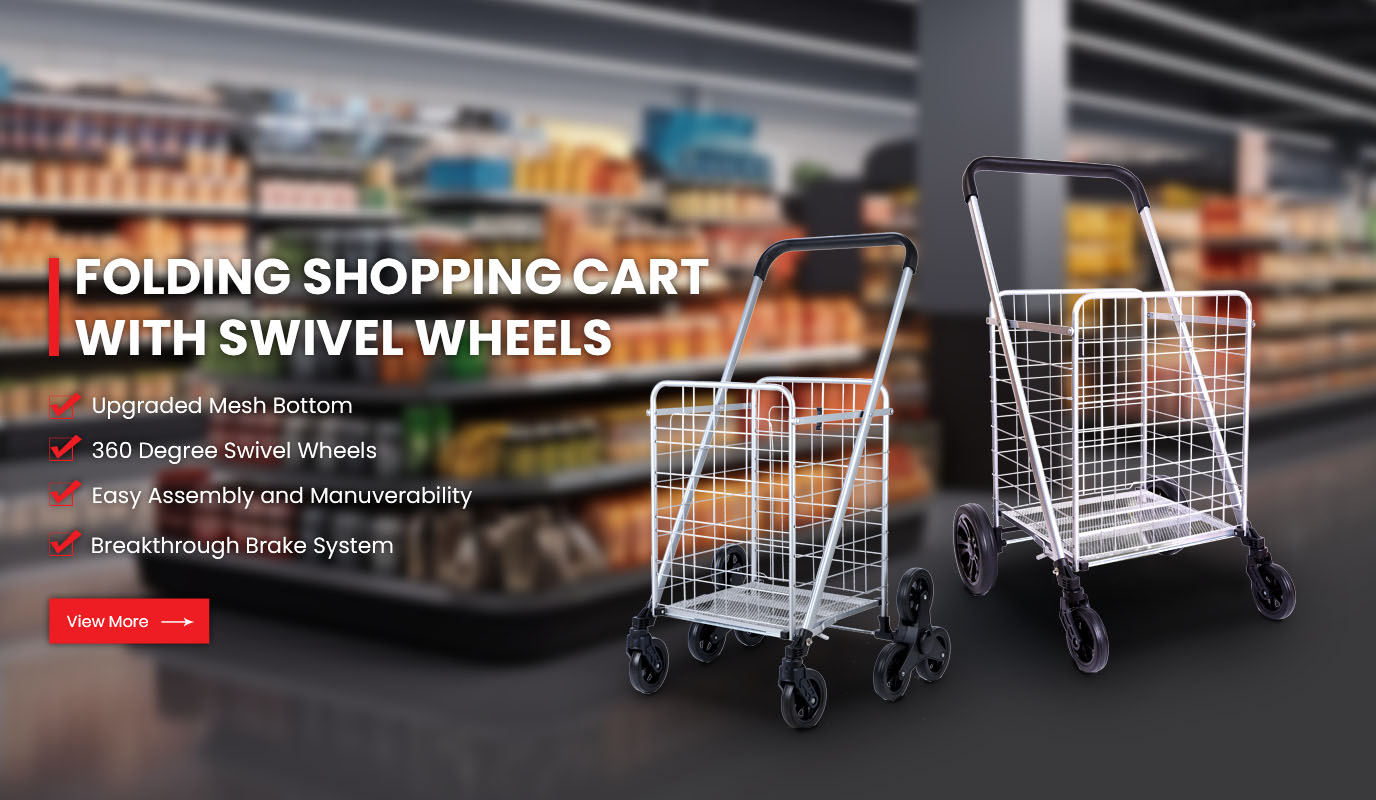Modular Detachable Shopping Carts Reduce Logistics Costs As Shipping Costs Soar
Modular detachable Shopping Carts: innovative tools for reconstructing logistics efficiency
The modular detachable design of heavy duty shopping carts with wheels is subverting the traditional logistics model. Its core features include:
Detachable structure: The body, wheels, handles and other parts are connected by snap-on connection, and can be disassembled into a flat plate within 3 minutes, reducing the volume by 75%.
Standardized size: The size after folding strictly matches the inner wall of the container, and the loading density is increased to 92%.
Durability guarantee: The frame is made of Q355B high-strength steel, with a single load of 150kg and a disassembly life of more than 500 times.
Surge in shipping costs: pressure and breakthrough points
1. Three major drivers of cost surge
Fuel price: The price of marine fuel has risen from US$300/ton in 2020 to US$850/ton in 2023.
Container imbalance: The container gap rate on the Asia-Europe route once reached 25%, and the cost of renting containers has risen by 180%.
Port congestion: The average waiting time at the Port of Los Angeles has been extended from 3 days to 18 days, and the proportion of demurrage fees in logistics costs has risen to 15%.
2. Survival challenges in the logistics industry
Profit margin compression: The proportion of shipping costs in the total cost of cross-border e-commerce has soared from 20% to 45%, and the gross profit margin of some companies has fallen below 5%.
Order loss: The cancellation rate of European customers due to delayed delivery has increased by 12%, especially for large items such as heavy duty shopping carts with wheels.

Modular design: The technical logic of reducing costs by 25%
Packaging design revolution: from three-dimensional to flat
Space utilization doubled: The detachable design increases the volume utilization of containers from 55% to 90%, and the single-box capacity increases by 63%.
Protection performance upgrade: After disassembly, the components are embedded in the customized grooves of EPE pearl cotton, and the transportation damage rate is reduced from 8% to 0.5%.
Data support: A manufacturer exports 2,000 shopping carts to the United States. Traditional packaging requires 8 containers, while modular design only requires 3, and the shipping cost is reduced by 62.5%.
heavy duty shopping cart with wheels design optimization:
The body is divided into three parts: front frame, rear frame and wheel set, and the thickness after folding is 15cm.
Galvanized steel plate is used instead of ordinary cold-rolled plate, and the salt spray corrosion resistance life is extended from 2 years to 5 years.
Logistics efficiency improvement:
The container loading capacity increased from 900 to 2,500 vehicles, and the unit freight rate dropped from US$18/vehicle to US$13.5.
After arriving at the port, local assembly was carried out quickly, and the labor cost was reduced from US$5/vehicle to US$1.2.
Results:
Annual shipping cost savings: (18-13.5) \times 120,000 = 540,000 (18−13.5)×120,000=540,000 US dollars
Profit margin recovery: from 3.8% to 9.6%, and customer renewal rate increased to 95%.
Future trends: Intelligent and circular economy support
1. Intelligent assembly
AR-assisted assembly: Workers use smart glasses to identify the location of components, and assembly efficiency is increased by 40%.
IoT traceability: Each module is embedded with an RFID chip to track global inventory distribution in real time.
2. Green logistics closed loop
Folding is recycling: Abandoned shopping carts can be 100% disassembled into steel, plastic, and rubber, with a recycling rate of over 90%.
Carbon footprint offset: Modular design reduces the carbon footprint of a single shopping cart from 28kg CO₂ to 19kg, in line with the EU CBAM carbon tariff requirements.
3. Policy collaborative innovation
Tariff concessions: The EU reduces import taxes on recyclable design products by 2%.
Port priority channel: Singapore Port provides 48 hours of free storage fees for high-load rate containers.
Modular and detachable heavy duty shopping cart with wheels reduces shipping costs by more than 25% through the dual strategy of "space compression + localized assembly". This is not only a victory for packaging design, but also a model for the reconstruction of supply chain resilience. In the future, with the deep integration of intelligent technology and circular economy, modular design may become the standard for global logistics cost control - whoever masters spatial efficiency will control the lifeline of profits.



